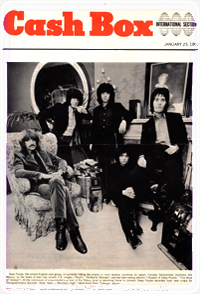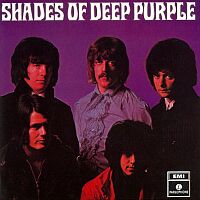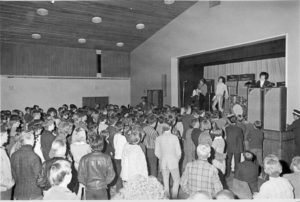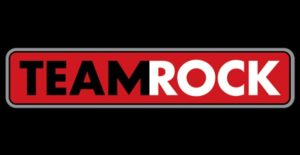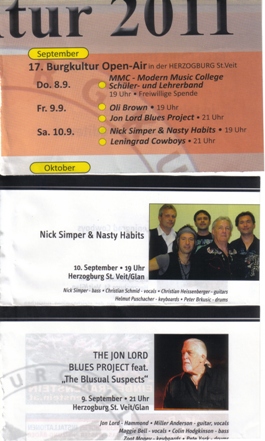On arriving back in England, things began to move at an incredible pace. The deal with Tetragrammaton in the US was finalised and we were signed to EMI for other territories. We also signed a management deal with HEC Enterprises who had already invested heavily in the group.
Leaving Deeves Hall was quite a wrench, although we hadn’t been there very long. I really loved the place and hoped that one day I could buy it. Jon Lord was very enthusiastic, saying that if I became the owner then he would clear the pond and landscape the front as a gift! All this was pie-in-the-sky of course as we still had only our meagre wages to support ourselves with. Early one evening the group and managers all met at the Roebuck Hotel in Forest Row, at the time one of the smartest hotels, situated near Haywards Heath. After a meal and drinks we were taken to Highleigh Manor, a beautiful old hotel in the village of Balcombe. Here we could relax and prepare the music for our first album. A large annexe provided a rehearsal room, where in one corner stood an ancient harmonium. Jon mastered the pedals which powered the bellows that provided sound to this antique keyboard.
During the next few weeks we polished our material, and Rod Evans came up with the song One More Rainy Day, which was to be included on the new record. Life at the manor was very comfortable, with Jon and myself sharing a large room on the first floor, reached by a huge oak-panelled staircase. Ascending the stairs took us past a huge chandelier, giving the place an air of grandeur.
With summer fast approaching we could make the most of the gardens, as a steady trickle of visitors dropped by. One day Tony Edwards brought his family down and we all played a hilarious game of croquet on the lawn. Very rock ‘n’ roll!! Following our Danish success we felt confident enough to play our first show in England. Rod and Ian suggested a gig that they had played before, the Red Lion Hotel in Warrington. This was the gig where they had first met our road manager, Ian Hansford. Usually two or three bands were featured on Saturday night, which guaranteed a good crowd. Being new and unknown made it difficult to negotiate a fee and so we settled for expenses only, plus bed and breakfast, in return for which we cheekily demanded to be given top billing! The manager reluctantly agreed, and so off we set for our first gig on British soil.
Like our first show in Denmark, this was also a rousing success with lots of onstage craziness making sure that no-one noticed the musical blunders and bad notes. The audience and the hotel manager loved us, so everyone was happy. Two members of the support group, The Sweet Shop, also loved us becoming firm friends and supporters. Singer Brian Connolly and drummer Mick Tucker were so impressed that they came to gigs and visited us socially whenever they could. Eventually they would shorten their band name to The Sweet, and have enormous success.
During the month of May 1968 we entered the Pye recording studios in London to begin making the Shades of Deep Purple album. I felt very comfortable here as this was the same studio where I had begun my professional recording career, cutting five tracks during 1965 as a member of Buddy Britten’s Regents.
Of course the control room personnel were different, with ace engineer Barry Ainsworth in charge. Making records in those days was a totally different process to today, where recording can be done in stages with multitracking, repairing, musicians not always playing together, and with the computer of?? taking over much of the work. In 1968 recording was done on magnetic tape, with only four tracks available. A skilful engineer would ‘bounce’ completed tracks together to free up an extra track, but this was a hit or miss process and the sound quality often suffered as a result.
Ian Paice and I had to share the same track, not having the luxury of one each until the advent of the 8-track machine. This meant that the studio balance between bass and drums had to be perfect because any imbalance could not be rectified after recording. The vocals had to have a separate track so, with only two left, the engineer had his work cut out! Operating the huge tape machine meant pressing stop and start buttons, and this was done by the apprentice who did a lot of button pressing whilst watching the engineer in order to learn the job.
In Barry’s case his apprentice was a very pleasant young man named Martin Birch who would soon become an in-demand engineer in his own right! Whilst some studio mistakes could be rectified, it was generally necessary to stop recording and restart if a mistake occurred. Naturally no one wanted to make a blunder causing everyone to start again, so when the red recording light came on you could almost hear the adrenaline flowing!

It took us just eighteen hours over two days to record Shades; maybe enough time to record one back-track in today’s world. I asked if we could have more time, but Coletta replied that the studio was not available. Obviously, the truth was that the budget would not allow it! From the control room, the whole operation was overseen by our producer Derek Lawrence, who proved to be a great catalyst between us and Barry Ainsworth. Our constant rehearsing meant that we could deliver the goods on time with few extra ‘takes’. Jon and I provided backing vocals for Rod, when it was discovered that I was the only one able to sing falsetto, which we used a lot – probably too much, in hindsight. Derek carried out the mixing process on his own (to save time and money) which didn’t please us too much, but, whatever its faults, I think we produced a pretty good first LP which is still popular over half a century later!
One drawback was the necessity to remove a few bars from the intro to Hey Joe which infringed copyright. We were all given a white label copy of the album before the offending bars of music were taken out. Sadly, I gave mine away – probably a collector’s item now! One track from Shades really stood out. As soon as we heard the back-track of Hush, we all knew that it was special, and the arrangement, courtesy of our pal Rod Freeman was really good. Our management were not impressed however, feeling sure that our cover of Help by The Beatles would be the debut single. Luckily the top brass at Tetragrammaton agreed with us, and so Hush was to be the debut single release. With our first album and single in the bag we carried on with regular rehearsals and attended several more photo sessions, including one with the famous Dezzo Hoffman who specialised in filming groups in excruciatingly daft poses. True to form, he had us standing in a line whilst all holding a long rolled-up carpet! Ritchie’s face was a study as Dezzo exhorted us to “smile”. Luckily most of these ghastly photos have never seen the light of day. The Shades cover was completed and looked fine, apart from the rather silly liner notes which the band were not consulted on.
With a couple more gigs imminent, Ritchie thought that he needed a stronger guitar than his Gibson in order to enhance his showmanship. Together we drove to Marshall’s shop in Hanwell where I suggested that a Fender Telecaster would be the most Indestructible axe to use. He agreed and purchased a used black model which, over the coming months, would be tested to the extreme!
One day it was announced that Tetragrammaton were coming to London to throw a launch party for us. Hosting the bash at the impressive Grosvenor Hotel was record label boss Roy Silver, who made sure that guests received a package of three albums, namely Shades, a Cream album and one by Jimi Hendrix suggesting, a bit prematurely I thought, that we were in the same league as the other two!
The venue was packed with high-profile guests, including EMI boss Sir Joseph Lockwood, who wore the facial expression of someone who had trodden in dog mess! Others, like top TV host Simon Dee, milled around hoovering up the free food and drink. No-one paid much attention to us, and why should they have? We were complete unknowns! The Americans had also leased a large house at Totteridge for their London HQ installing a charming couple from Los Angeles called Larry and Carol, who also threw a party for the group. We chatted to Barry and Martin from Pye Studios, who said how much that they enjoyed recording us, and considered us better than many of their clients. Ronnie Beck from Feldman Music, our publisher, went further, saying that whilst we weren’t famous names, he considered us a real supergroup because we could really play! Naturally this gave us an enormous boost.
With more gigs imminent I tackled John Coletta about the wear and tear on my car, asking, not unreasonably I thought, if the budget could include a service and the odd tyre. Coletta refused so I told him that the band could hire a car from now on. His response was to purchase a large Humber for me to drive but before I got to drive it Coletta lost control on the way home and crashed, totally destroying it!
For a while we hired large Saloon cars for going to gigs but for the rest of the time I made my car available for band use, occasionally taking Ritchie to visit his parents in Camberley. He and Babs liked to both sit in the back, posing like royalty! Often we would visit our publishers, Feldman music in Soho. We were always welcomed at the friendly office by the guys who would be promoting our music, such as Ronnie Beck, Harold Frantz, brother of famous producer Johnny, and young Ian Kimmett who would become a good friend, all overseen by Ben Nisbet, already legendary in the music business.
The unofficial HQ was the nearby Admiral Duncan pub, which would later be bombed in an outrageous attack on the gay community! In those days though it was a favourite watering hole for journalists and music people and we happily shared many a liquid lunch with the Feldman gang! During the month of June it was decided to cut costs and so HEC rented a large terraced house for us in Acton Vale, West London. Originally horrified at our arrival, the man next door became friendly and offered us rehearsal premises at the nearby Social Club where he was on the committee. The club was situated in the old Savoy cinema on the main A40 road into London, and for a while it was an ideal daytime facility for us.
During the same month EMI officially released our single, Hush, to great

excitement within the group. This soon abated however when we discovered that no shops carried our disc, and worse, they hadn’t even heard of it! EMI Records proved to be absolutely useless at promotion and rumour had it that this was because their whole operation was concentrated on the new single from The Beatles! It was well known that many records were “hyped” into the record charts, often by the simple but costly method of buying lots of copies from the so-called secret list of record shops that were used to compile the chart, so we suggested to Coletta and Edwards that maybe this was the way forward.
Their reluctance to spend money on any form of promotion left the group seething with frustration, so Jon and I decided to drive to Brighton to the home of Ron Hire. Ron was sympathetic, saying that he would discuss the problem with John and Tony, but of course it cost a lot just to keep the band running, he explained. According to Ron, he had provided the initial investment in the band, but when it came to John’s turn he was unable to raise the necessary funds, so Tony suggested that the management was pruned down to Edwards and Hire. Ron insisted that the three of them must stay together, and so it was decided that John Coletta would pay his way by running the office full-time promoting Deep Purple, which suited John as his advertising job was about to end. Sadly, in months to come Ron would have problems of his own, when he would find that his feelings of friendship would not be reciprocated!
As Hush continued to sink without trace, the band carried on as usual. Feldman had secured us several radio broadcasts at the BBC which paid a reasonable fee and helped to lift our profile. All the top radio shows would play pre-recorded songs from different acts which were inserted between records. These were recorded at various BBC Studios, usually equipped with antiquated pre-war machinery, and overseen by producers who usually did their best to achieve a decent sound. Others, usually the older guys, just wanted to get it over with as soon as possible. When I asked one of these, in my politest manner, if we could check a shaky backing vocal, the answer was a brusque “No!”. He then informed me that the tape was in his bag, and he was off for his dinner! I took care not to respond at all, so I was amazed when a couple of days later Derek Lawrence informed me that the rumour amongst BBC producers was that the Deep Purple bassist was a troublemaker!
The news that our single was to be aired on the John Peel Show caused great excitement. Peel’s Sunday afternoon show had a huge audience countrywide and was extremely influential, although he loved to praise weird and sometimes awful discs whilst rubbishing anything good. Jon and I made a trip to my parents’ house in order that we could hear it at its best on their excellent radiogram. While we were prepared for a lousy review, we were very happy that the whole country would now hear Hush! Imagine our disappointment then, when he announced a new single from Deep Purple and went on to play the B side!
Later in the year we were one of the acts on a theatre show hosted by Peel, who pointedly ignored us throughout the evening. His obvious dislike of us was further compounded when Jon Lord stupidly offered to buy him dinner at the Speakeasy. His one-word reply spoke volumes! Oddly enough we made several more recorded performances for Peel’s show and had great rapport with his producer. Our version of Help somehow also made it onto the show which apparently was heard by John Lennon who loved it!! A welcome boost for us!
Derek Lawrence was also helping to keep us busy by booking the group, minus Rod, out as a self-contained session unit, to provide backing in the studios for various acts. These sessions often went into overtime, resulting in a double fee. Most welcome! One of our gigs was at a ballroom in Margate on the south coast, which was attended by Larry and Carol. I made the mistake of leaving my Fender bass at home, using the semi acoustic Gibson instead. The resultant feedback at the high volume at which we played was dreadful and almost ruined the show. Ritchie got a chance to test his Telecaster though, and we watched in awe as he dragged it around the stage, jumped on it, and finally hurled it like a spear at the ceiling where it jammed quivering and screaming between the roof and a large stack-pipe. When the road crew retrieved it, the paint was barely scratched, proving that it was an axe that could take punishment!
This particular gig didn’t go down as well as usual though, and it was a rather despondent band that left the stage. Carol and Larry were very impressed, however, saying rather prophetically that we would slay the audiences when we got to America. This was not a happy period for us though. We realised that our managers, although good at financing us, did not have a clue how to market the band, or where to go from there. Both Hush and Shades had sunk without trace, helped by lack of interest from EMI Records. General feedback led us to believe that we had made an impact on other musicians, but the majority of the public were oblivious. Meanwhile the business was buzzing with up-and-coming acts such as Fleetwood Mac, 10 Years After, The Nice and Chicken Shack. New guitar heroes were being talked and written about, which frustrated Richie who felt, quite rightly, that he could blow them all off the planet!
HEC agreed when Jon and I suggested that they should employ a publicity agent. We had both previously worked with a highly successful and respected PR man named Keith Goodwin, who we had got to know well, so obviously he was our first choice. Keith felt that he would be able to lift our profile and agreed to take the job. Jon and I went to Coletta with the good news, only to be told that he had already given the PR job to one of the Admiral Duncan regulars who had no credentials for the job at all! This was another blow to the band, and we realised that, with all their lack of showbiz know-how, our management were not willing to take our advice, or listen to our opinions!
However morale was still high in the group. We had only been together for a few months, but felt confident that we had a lot to offer. As the time drew near for the release of Hush in America, talk turned to a possible US tour. This was an exciting prospect as none of us had ever travelled outside Europe before. It was not long before we were to be lifted with the best news ever. As we chatted at a meeting with Hire, Edwards and Coletta, drinks were produced, then we were told that Hush was being played all across the US airwaves and was currently climbing up the top 100 record chart! Ron presented each of us with a gold ring as a celebratory gift, and we all began to laugh as the news sunk in. At last Deep Purple were on the way! …
Chapter 20 ←


